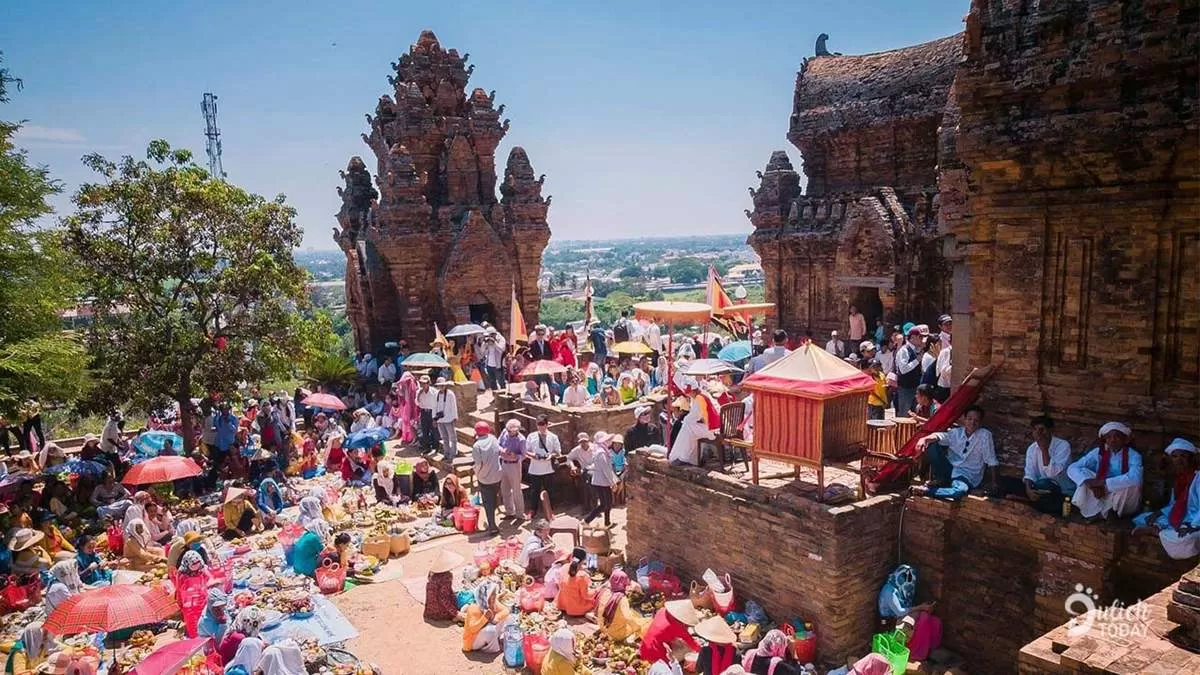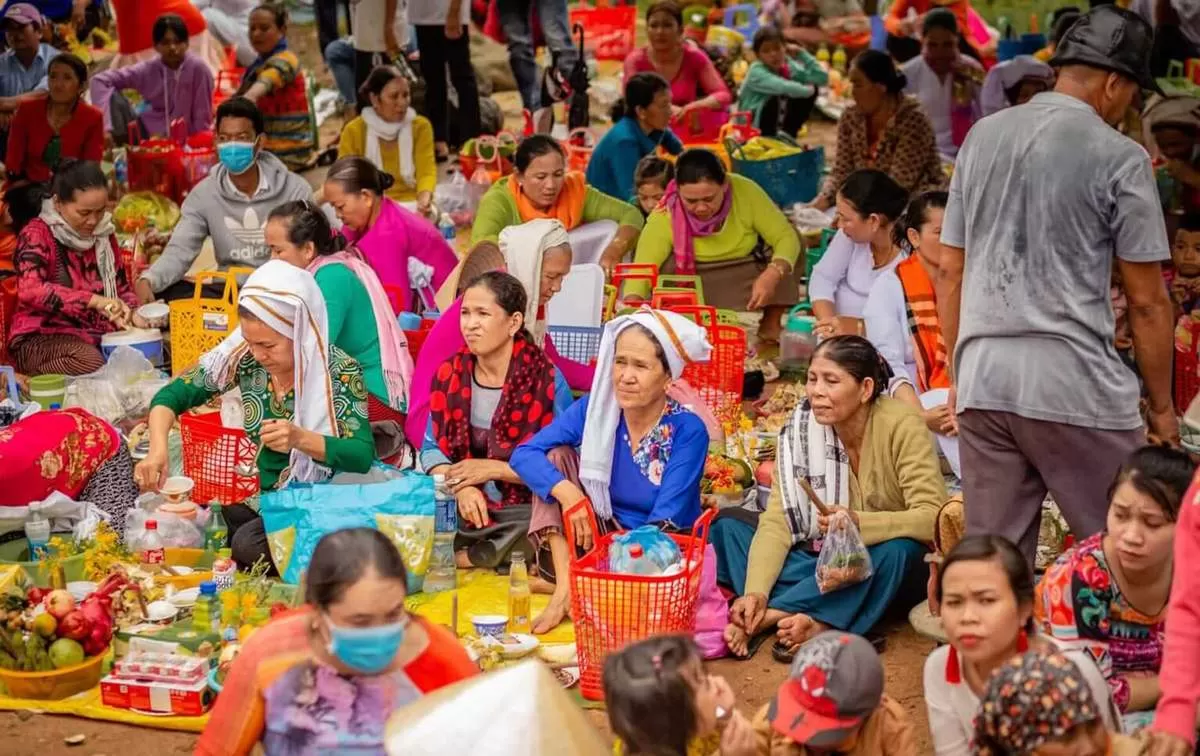Are you ready to embark on a vibrant journey into the heart of Cham culture? The Kate Festival in Ninh Thuan is not just a celebration; it’s a rich tapestry of history, spirituality, and community that brings together the essence of the Cham people. Join Unilever.edu.vn as we dive deep into the origins, history, and the captivating rituals of this ancient festival.
 Exploring the significance of the Kate Festival in Ninh Thuan
Exploring the significance of the Kate Festival in Ninh Thuan
Origins and History of the Kate Festival
1.1 The Origin of the Festival
The term “Kate” derives from the word “Katik,” related to Hindu practices, and “Kattika” in Sanskrit. While it literally refers to a celebration in the seventh month of the Cham lunar calendar, its broader meaning encompasses a festival dedicated to honoring ancestors, deities, and the founders of the nation. The Kate Festival represents a unique expression of the Cham Kingdom, showcasing its distinctive cultural heritage.
Over the years, the Kate Festival has been influenced by various cultural shifts, particularly from Hinduism and Islam. The interplay between three religious groups—Cham Ahier, Cham Awal, and Cham Islam—has led to unique variations in the festival’s rituals, reflecting the community’s diversity while maintaining shared traditions.
1.2 Historical Context
Unfortunately, much about the history of the Kate Festival remains undocumented, leaving us with limited records about its inception. However, we can trace the festival’s roots back to the flourishing period of the Champa Kingdom, spanning from the 2nd to the 12th centuries. During this time, the introduction of Hinduism had a profound impact on Cham ceremonial practices, particularly in significant events such as harvests, victories in battle, and royal enthronements.
The decline of the Champa civilization around the 15th century, marked by the fall of Vijaya (now Bình Định), saw a gradual fading of Hindu influences as Islam began to dominate. Nevertheless, the remnants of Hindu traditions continued to persist. Today, the Cham community in Ninh Thuan is still divided among different beliefs, mainly encompassing the Cham Ahier, who practice Brahmanism, and the Cham Awal, who are followers of Islam.
Timing and Locations of the Festival
The Kate Festival typically spans three days, commencing on the first day of the seventh month in the Cham calendar, which usually falls between September 25 and October 5 in the Gregorian calendar. Key locations for the festivities include the Po Nagar Temple (in Thôn Hữu Đức, Phước Hữu, Ninh Phước), the Po Klong Garai Tower (Đô Vinh, Phan Rang-Tháp Chàm), and the Po Rome Tower (Thôn Hậu Sanh, Phước Hữu, Ninh Phước).
During the festival, rituals flow seamlessly from the temples to the villages and ultimately into the homes, exemplifying a communal tradition that the Cham people have preserved for millennia.
Rituals Held During the Kate Festival
The rituals accompanying the Kate Festival are multifaceted, occurring simultaneously across all three temples. While the overall structure remains consistent, specific practices may vary slightly depending on local customs. The festival unfolds in distinct phases:
3.1 Rituals at the Temples
The opening ceremony starts with offerings at the temple, usually led by a religious leader or priest designated as the “kho” (the main officiant). The kho utilizes a traditional instrument called Kanhi to chant sacred verses, while a ceremonial assistant performs offerings to deities. Ritual items during this solemn occasion include a large goat, three chickens for purification, several rice platters with goat meat, salt, cakes, fruits, and various libations like wine and sticky rice.
 Traditional performance at the Kate Festival in Ninh Thuan
Traditional performance at the Kate Festival in Ninh Thuan
The proceedings unfold in an orderly manner. The first rite involves receiving a ceremonial robe brought from the mountains by a Raglai emissary, typically at 7:00 AM. This is followed by inviting the deities to partake in the offerings, conducted through a ritual known as the “tắm tượng” (bath for the statues) performed by Brahman priests. The climax of temple rituals occurs around 9 AM, lasting approximately three hours.
3.2 Village and Family Ceremonies
Village festivities run parallel with temple rituals, incorporating both the traditional and celebratory aspects of the Kate Festival. Prior to the main events, villagers organize communal cleaning of houses of worship, set up decorations, and prepare food and drink. Cultural performances are also arranged, injecting a festive spirit into this solemn occasion.
Local rituals involve each village offering prayers to their respective guardian deities, akin to how Kinh people honor their founding spirits. Instead of relying solely on religious leaders, the performances are often led by respected community members, reflecting a genuine connection between the villagers and their deities.
As the Kate Festival concludes in the villages, families return home to pay homage to their ancestors. The eldest family member typically oversees the final rites, ensuring all relatives are present for this sacred moment of unity and gratitude. This practice reinforces family bonds and provides an opportunity for those living far from home to reconnect with their loved ones.
Conclusion
The Kate Festival in Ninh Thuan is not merely a series of rituals; it represents a profound connection to the past, bridging the spiritual and the familial, and showcasing the enduring legacy of the Cham culture. As Unilever.edu.vn invites you to experience the festival firsthand, we are certain it will leave an indelible mark on your understanding of the Cham community and their vibrant traditions.
We hope you’ll seize the opportunity to witness the enchantment of the Kate Festival, diving deep into the heart of a culture rich in history, spirituality, and unity!
